T 250
Single-component powder cementitious tile adhesive, type C2 TE according to EN 12004, flexible, non-slip and with extended open time, for bonding all types of ceramic tiles of medium/small size, both indoors and outdoors, to walls and floors.
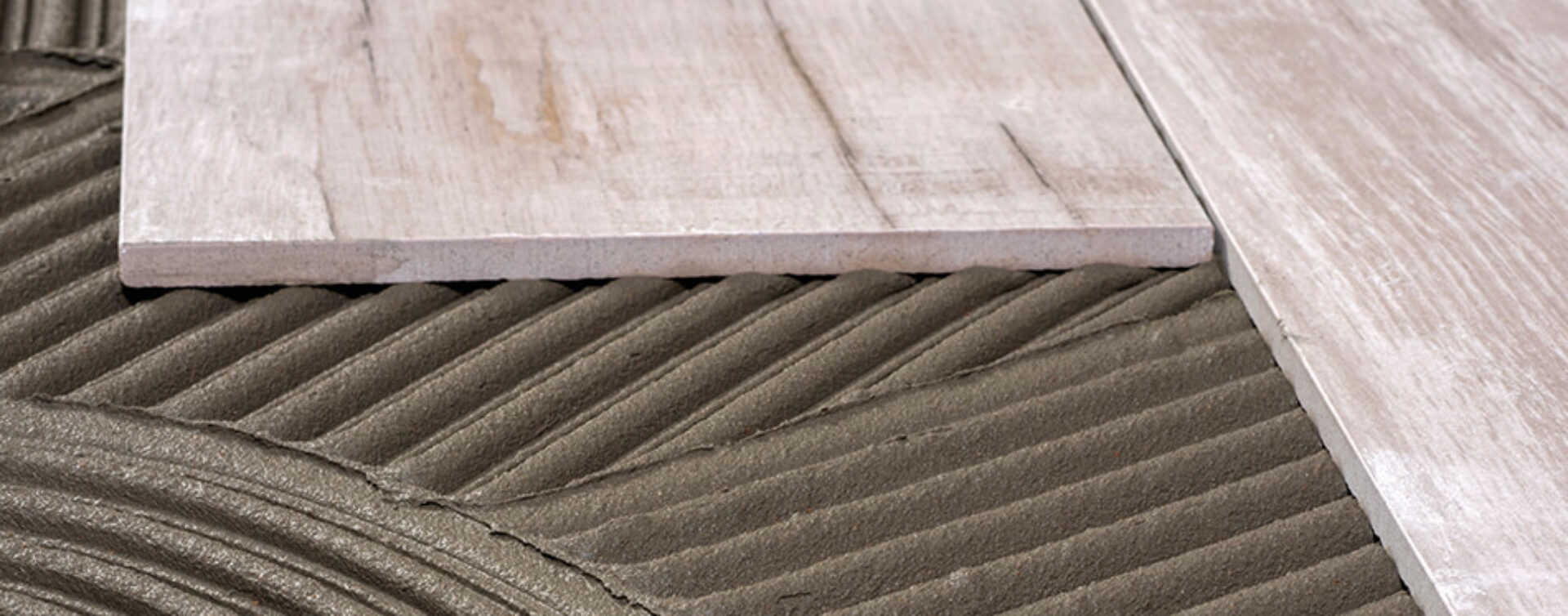
Single-component powder cementitious tile adhesive, type C2 TE according to EN 12004, flexible, non-slip and with extended open time, for bonding all types of ceramic tiles of medium/small size, both indoors and outdoors, to walls and floors.
Variations
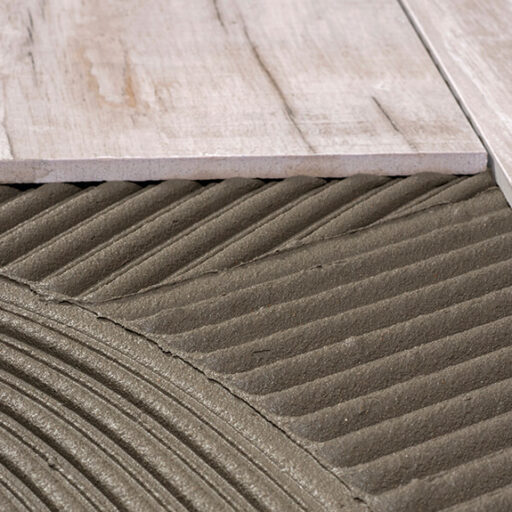
Discover more
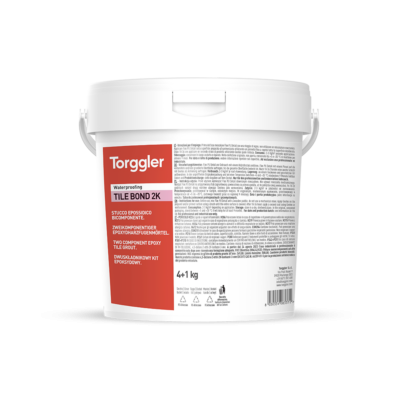
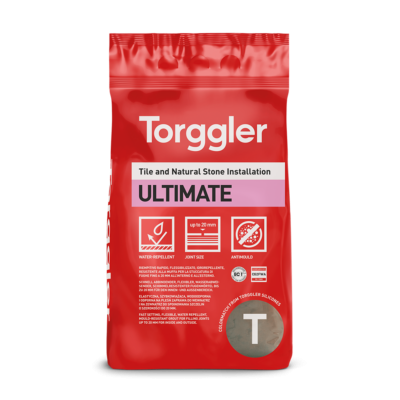
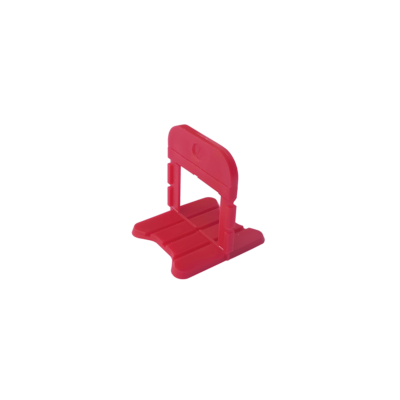
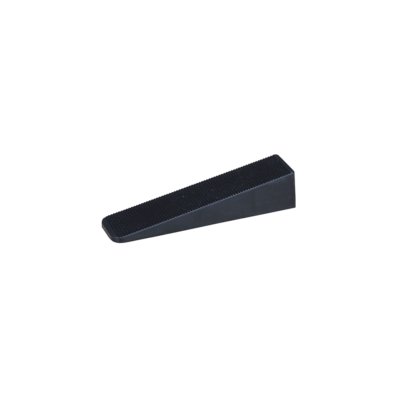
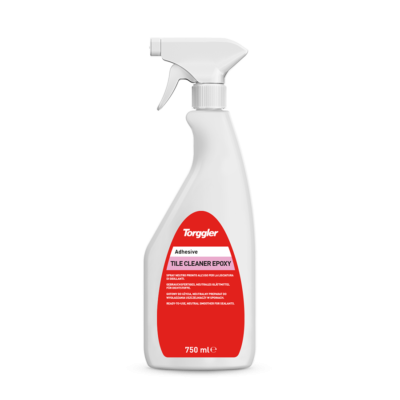
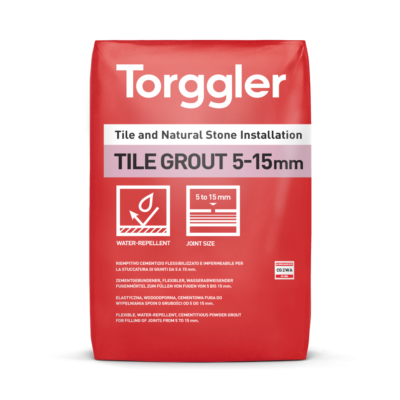
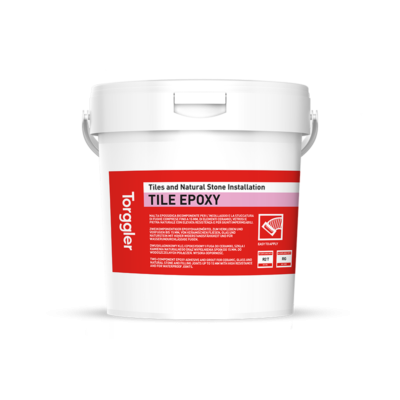
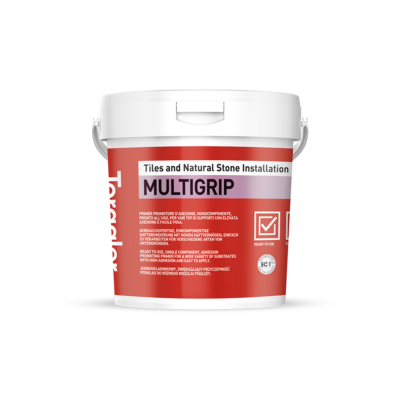
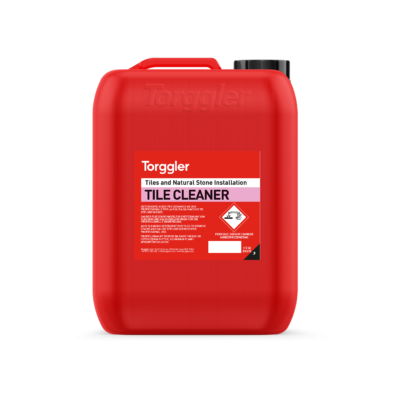
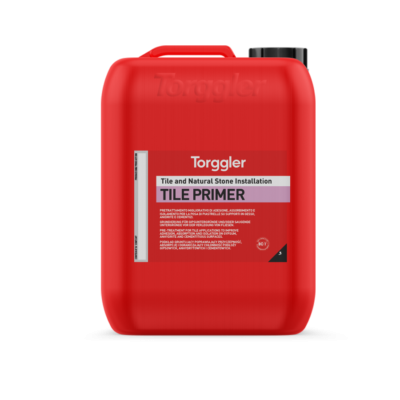
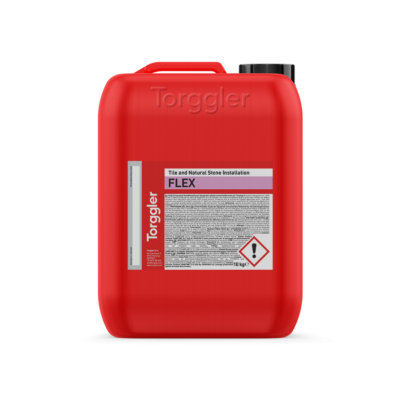
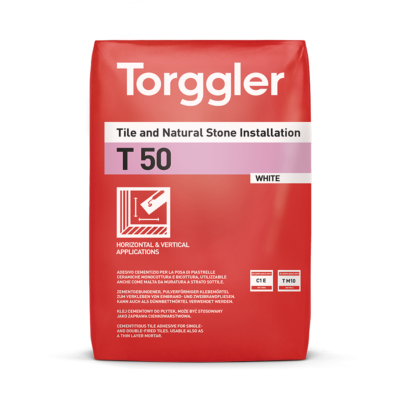
T 250 is a powder cementitious tile adhesive available in white and grey, based on high-strength cements, selected aggregates, synthetic resins and specific additives. Once mixed with water it creates a glue with excellent workability, excellent thixotropy, medium flexibility and high adhesiveness on all types of cement substrates. Applied vertically it does not drip and does not let the tiles slip. The extended open time allows safe installation even in hot and windy climates. It is resistant to frost-thaw cycles. T 250 is classified as class C2 TE cement adhesive according to EN 12004.
Preparation for use
Substrates must be sufficiently dry, strong, solid and regular, clean and sound, free of oil and grease, dust, crumbly material and dirt in general, and free of residues of paint film, and must be suitably cured and free of significant shrinkage. Indicatively, traditional cement-based screeds with normal setting and hardening must be cured for at least 28 days; cement-based or cement-lime mortar based plasters must dry for at least 14 days. Large imperfections and surface irregularities such as unevenness, cavities, gravel nests, eroded or deteriorated points, must be previously repaired and uniformed with self-levelling smoothing, for example Livellina 0-10, or with a special mortar, such as Restauro R2, Rinnova or Monorasante. Particularly porous and crumbling substrates and substrates with very low mechanical strength and that can be easily scratched must be treated in advance with Tile Primer.
Product preparation
Mix T 250 with 26-28% of clean water (equal to 6.5-7.0 litres per 25 kg bag) until a smooth, lump-free mixture is obtained. Allow to stand for 5 minutes, then mix briefly. The prepared mixture remains workable in the mixing containers for about 5 hours under normal conditions (at 20 °C); higher temperatures shorten the workability time, while lower temperatures lengthen it. In case of direct sunlight, therefore high temperatures of the substrate, it is advised to moisten it with a sponge to cool it, without leaving layers of surface water.
Instructions for use
Apply T 250 with a specific toothed spatula, the teeth size depend on the type and size of the tiles to be bonded, so that the back of the tiles is completely covered. For a better adhesion it is recommended to first apply a thin and uniform layer of adhesive on the substrate using the smooth part of the toothed trowel, and then immediately apply a second layer of the desired thickness with the toothed part. Apply the tiles by exerting adequate pressure and giving them a weak translational motion. When bonding tiles larger than 33×33 cm, with a marked relief pattern, for outdoor applications, especially in areas subject to high temperature changes or frost-thaw cycles and considerable water stress, it is necessary to adopt the “buttering-floating” technique: the mixed adhesive is applied with a toothed trowel on the substrate and is spread with a trowel on the back of the tile skimming the relieves flush. The tiles must be laid only within the time interval during which the coated adhesive is still fresh and sticky, i.e. it has not yet formed a superficial skin. This time interval is called “open time” of the adhesive, and it depends on the environmental conditions. If the open time has been exceeded and the coated adhesive has formed a superficial skin, it is necessary to rake it with the toothed trowel to break the skin and “refresh” it. Absolutely avoid wetting it on the surface because it would form a film of anti-adhesive water that prevents the tiles from coming into contact with the adhesive, irreparably compromising their installation. Tiles should not normally be wetted before laying; only in the case of tiles with a dusty relief pattern it is advisable to wash them by soaking them in clean water for a few seconds. For plaster substrates a pre-treatment with Tile Primer is absolutely necessary.
Cleaning
The tools used for laying can be cleaned with water before the adhesive hardens; afterwards cleaning can only be carried out by mechanical removal. If there is dirt on the surface of the tiles it must also be cleaned with a damp cloth before the adhesive hardens.
Store T 250 in a dry and sheltered place. In the original closed bags it is kept for at least 12 months. PROTECT FROM HUMIDITY.
Do not apply T 250 on: wood and wood conglomerates, metal surfaces, rubber, PVC, linoleum and derivatives; on substrates subject to continuous deformation, accentuated movements and high mechanical stress.
For overlapping applications and/or applications on substrates that are not very absorbent and characterised by adhesion difficulties, a pre-treatment with Multigrip is required. For applications on gypsum or anhydrite surfaces a surface pre-treatment with Tile Primer is required. In case of doubt, contact our Technical Department for this type of application.
Never mix T 250 with other binders such as cement, hydraulic lime, gypsum, etc.
Never resume with further additions of water when the mixture is firm. Stop using the mixed product when it has already started to set, so take care to prepare from time to time a quantity of mixture that can be applied within its workability time.
| Color | Code | Packaging | Packaging size | Pallet | Barcode |
|---|---|---|---|---|---|
| White | 5445 | bag | 25kg |
50 bags
|
|
| Grey | 5447 | bag | 25kg |
50 bags
|
T 250 can be used on heating floors, plasterboards and gypsum-based plasters (with primer).
| Powder product variations | white | grey |
| Consistency | Powder | Powder |
| Bulk density | 1.3 kg/litre | 1.3 kg/litre |
| Particle size | 0-0.5 mm | 0-0.5 mm |
| Fresh mixture variations | ||
| Mixing water | 26-28 % (6.5-7.0 litres per 25 kg bag) | 26-28 % (6.5-7.0 litres per 25 kg bag) |
| Mixture density | 1.55 kg/litre | 1.55 kg/litre |
| Mixture consistency | pasty – workable with trowel | pasty – workable with trowel |
| Sliding (EN 1308) | ≤0.5 mm | ≤0.5 mm |
| Mixture workability time (at +23 °C) | approx. 5 hours | approx. 5 hours |
| Open time (EN 1346) | >30 minutes | >30 minutes |
| Recording time (DIN 18156 part 2) | 20 minutes | 20 minutes |
| Application temperature | from +5 °C to +35 °C | from +5 °C to +35 °C |
| Hardened product variations | ||
| Adhesion by traction (EN 1338)
– initial adhesion: – adhesion after water immersion: – adhesion after heat ageing: – adhesion after freeze-thaw cycles: |
>1.2 N/mm2
>1.0 N/mm2 >1.1 N/mm2 >1.1 N/mm2 |
>1.4 N/mm2
>1.0 N/mm2 >1.1 N/mm2 >1.1 N/mm2 |
| Joints filling
– on the wall: – on the floor: |
after approx. 8 hours
after approx. 24 hours |
after approx. 8 hours
after approx. 24 hours |
| Can be walked on | after 24 hours | after 24 hours |
| Final hardening | after 14 days | after 14 days |
| Operating temperature | from -30 °C to +90 °C | from -30 °C to +90 °C |
| Consumption | from 3 to 8 kg/m2 | from 3 to 8 kg/m2 |
| Maximum achievable thickness | 10 mm | 10 mm |
| Classification according to EN 12004 | C2 TE | C2 TE |
The consumption of T 250 can vary from 3 to 8 kg/m2 depending on the type of tile and the substrate flatness characteristics.
Contact our team for personalized support and product guidance.